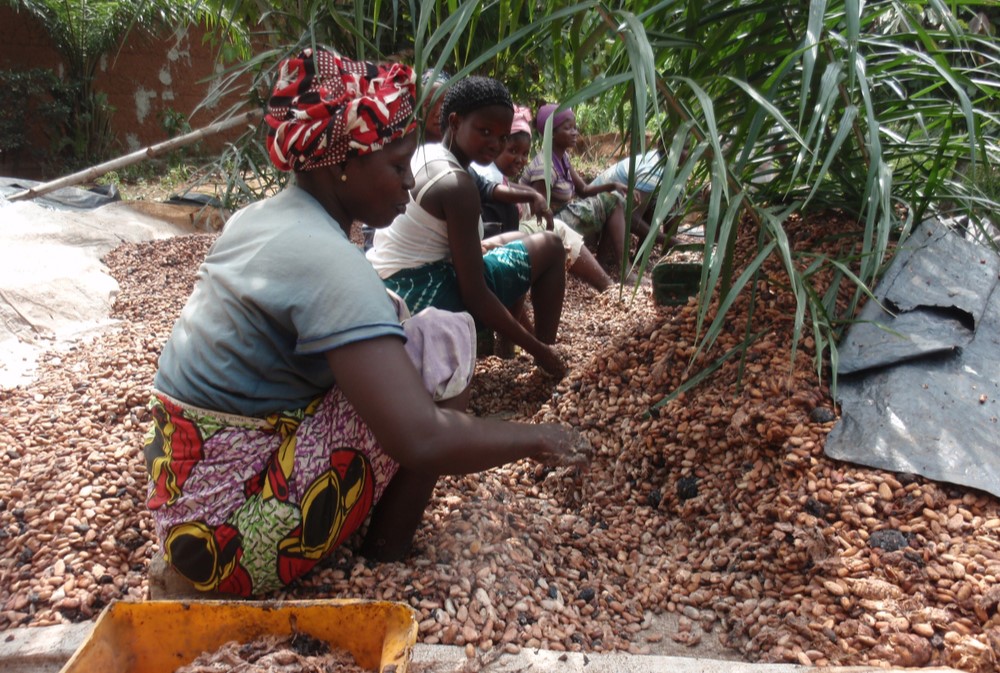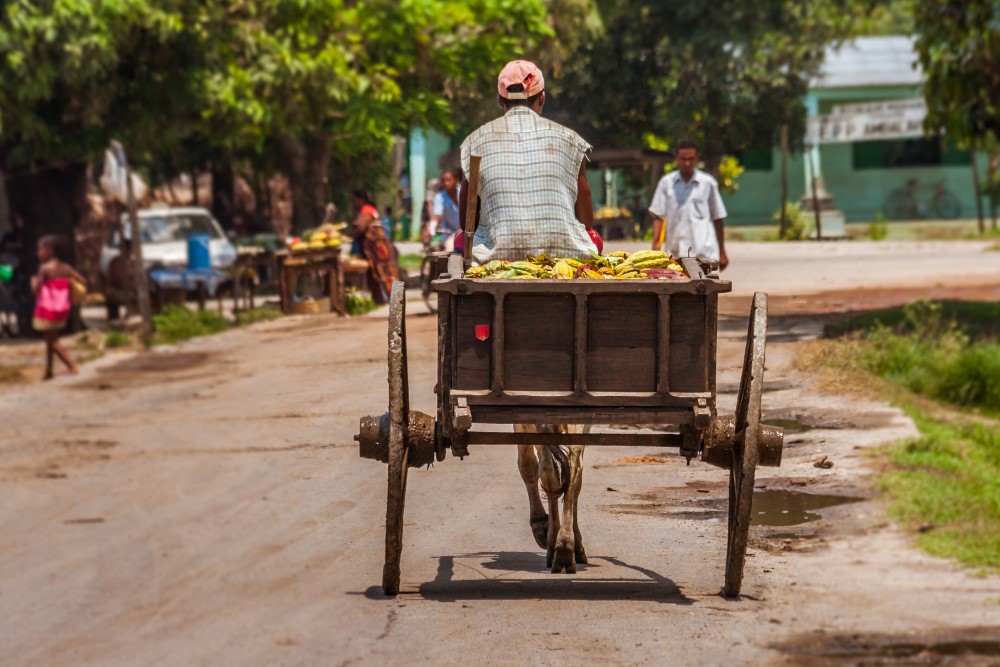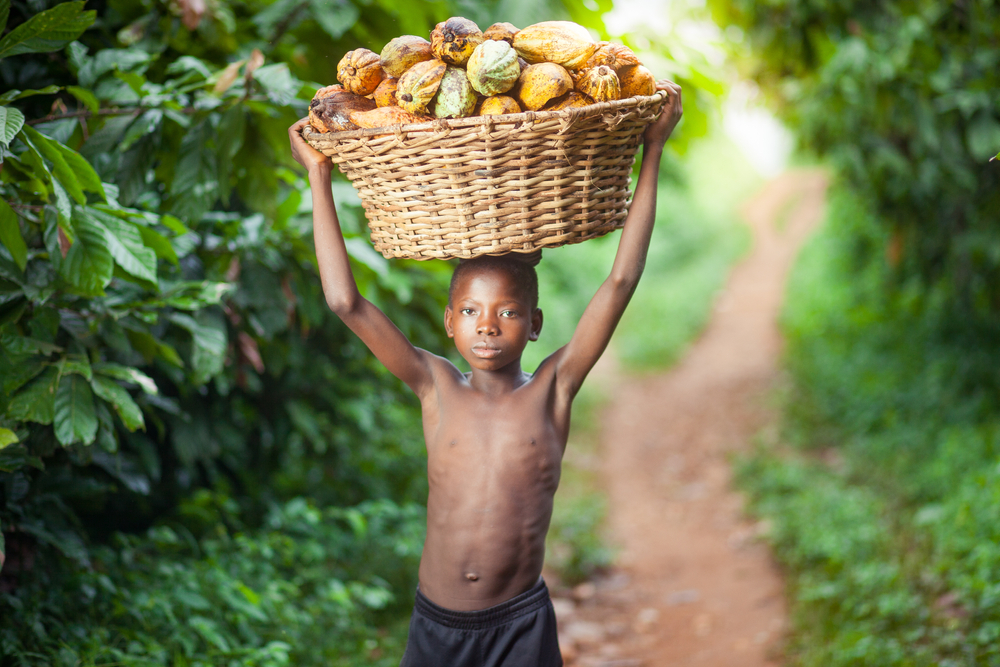Strong need to improve cocoa governance
There is a vivid and ongoing debate on different strategies for improving the position of cocoa smallholders in West Africa. Several studies focussed on opportunities for poverty reduction in the cocoa sector, looking at the role of land tenancy, the impact of fair trade, the opportunities for living wages and the importance of institutional and market reforms. All studies seem to agree on the idea that there is ‘no one size fits all’ solution, but they tend to disagree on the priorities and pathways for implementing a combined set of measures for improving farmers livelihoods. In essence, this is due to their reliance on partial approaches and the rather limited use of systems transformation thinking.
A recent report by Yuca Waarts (Wageningen Economic Research) and Manuel Kiewisch (Mondeléz International) published under the title ‘Balancing the living income challenge’ presents extensive field data on cocoa farmers’ incomes in Ghana and Cote d’Ivoire. The study shows that neither increases in yields nor better farm-gate prices offer sustainable alternatives for reaching minimum living income. The authors consequently make a plea for enabling particularly the poorest cocoa farmers towards income diversification and engagement in non/off-farm and self-employment.
This report recently received severe criticism by Nico Roozen with a blogpost ‘No need to question the relevance of fair pricing’ arguing that we need to pay more attention to opportunities for raising prices since that has a direct effect on farm household income, whereas investments in better yields also bear substantial costs and may eventually even lead to negative price effects. Therefore, major attention should be given to tighter market linkages and improving governance to enable cocoa farmers a decent living standard.
Both contributions mention a range of important challenges that need to be addressed to improve farm and household revenues, but fail to outline what are the key mechanisms to modify and improve this situation. Instead of combining different actions to strengthen the cocoa farming sector, it is important to consider the behavioural drivers of cocoa households for engaging in any of these strategies. It looks to me that three important issues that shape stakeholder prospects for adopting innovations and engaging in improved management around cocoa livelihoods and value chains are generally overlooked:
1. Investing in farms or in people: creating spillovers
Focussing on improving prices and/or yields implicitly considers the cocoa household only as a producer unit. This is certainly not true. While most cocoa farmers consider cocoa as an intrinsic part of their livelihood (and identity), they are can only be motivated to introduce substantial changes in production systems or trade regimes if this results in tangible benefits at the level of household consumption. Improving (child) nutrition and increasing the amount of healthy labour days may be, therefore, more relevant than a higher net farm income.
There is growing evidence that higher incomes do not automatically lead to better nutrition and health. In fact, both engagement in fair trade and investments in sustainable intensification do not improve household food security. This is due to the dominant male control over market sales and the concentration of sales revenues during short time periods. Money controlled by women and incomes that are regularly available have a substantially stronger effect on nutrition and labour supply. Instead of focussing on improving returns of cocoa farming and the generation of farm income, it is nowadays advocated to support smallholder development from the consumer side, using vouchers and cash transfers as an incentive for subsequent investments in farm upgrading. Improved nutrition will lead to higher labour productivity and can be paid-off from the production side of the household.
Considering the cocoa farm as a unit of production and consumption, the key strategy towards improving livelihoods starts with investing in the labour capacity of the household workforce. This particularly includes investment in education that yields future returns in term of farm innovation or potential off-farm income generation. The latter is certainly not competing with cocoa farming: an important part of investments for cocoa upgrading van be financed from off-farm income (including remittances from migration), thus creating important spillovers between different activities within the cocoa household. Moreover, diversification of household revenue sources reduces dependence on cocoa and improves farmer’s willingness and ability to invest in cocoa upgrading.
2. Improving total factor productivity: focussing on leverage points
Much attention is usually devoted to technical opportunities for improving return from cocoa production, either through higher yields or through better prices. This is just a virtual difference, since smallholders income simultaneously depends on the returns to land, labour and capital, expressed in the concept of ’Total Factor Productivity’ (TFP). Farmers can best increase their welfare by creating additional value from those resources that are most scarce to them.
In the smallholder cocoa sector, both land and capital are limited, but especially (family) labour is scarce. This may sound strange given the high level of local unemployment, but the growth of current labour-intensive production systems is mainly limited by the available family labour resources. Land cultivation is thus constrained by the peak labour demand and child labour will mainly be used to contribute labour for peak cocoa cultivation activities (i.e. pod-breaking). It is not sufficient to just increase the availability of resources, but we need to identify key leverage points at institutional and behavioural level that permit to generate higher returns to production factors.
There seems to be a general consensus that in the cocoa sector secure land rights are critical for enabling investments in better management of cocoa trees. Moreover, registered tenancy might offer opportunities for borrowing. In addition, land ownership contributes to a longer time horizon and creates future perspectives for cocoa households, thus mitigating the intrinsic risks related to any investments for improving TFP. And last but not least: balanced decision-making on priorities for household investment and resource allocation requires that women empowerment is guaranteed, in such a way that lifetime perspectives of livelihoods for all household members are fully considered.
3. Fair prices or fair chain?
There is general agreement that fair prices and premium payments are critical to sustain minimum livelihoods of many cocoa farmers. Prices should even raise more if ‘real costs’ are considered, including social and environmental externalities. For Roozen, fair pricing is crucial, whereas Waarts & Kiewisch show that even large price changes cannot guarantee minimum living income. Both studies therefore agree that a more comprehensive set of measures is required to support cocoa farmers.
Interestingly enough, limited attention is given to the organization of the cocoa supply chain and the distribution of margins. Currently, farmers receive only a tiny share of the total value added in the cocoa chain and the cocoa purchase costs only represent 4-6% of the price of a chocolate bar. Other activities, like processing, transport and retail receive more than 80% of the market price and are dominated to foreign parties. Local trade taxes also take away part of the national value added. There is an urgent need to discuss opportunities for supporting a cocoa ‘fair chain’ based on better transparency and a substantial redistribution of revenues between supply chain parties. A tiny 1% reduction of the retail share could be translated into a 10% increase in farmer’s income
Both articles focus on options for improving smallholder welfare through better resource use efficiency, without paying too much attention to the cost-effectiveness (i.e. how much results can be reached by allocating 1 US$ to a particular measure). Moreover, far too little attention is given to the behavioural incentives that enable cocoa farmers to take advantage of these opportunities. Supporting the dynamics of agricultural system transformation requires thorough insights in what farmers value most and how farmers can be motivated to make adjustments in the land, labour and resource allocation.
Both studies also outline a broad set of policy interventions for supporting a more inclusive and sustainable cocoa sector. Key strategies include: higher farm size, cost reduction, yield improvement (through sustainable intensification), higher price, crop diversification, better market linkages and good (pro-active) governance. The ‘right’ composition of this package and the size and sequence of the related measures is of fundamental importance for reaching success. Some measures may contradict each other (i.e. improving yields usually requires higher input costs), whereas other changes may lead to unexpected results (i.e. larger landholdings may achieve larger net cocoa income but average yields per hectare tend to decline with farm size).

A group of women working on cocoa production in Ivory Coast. Photo: BOULENGER Xavier / Shutterstock.com.
The fundamental weakness of most of the current studies that focus on improving the smallholder position in tropical supply chain is that usually much attention is given to socio-economic dimensions (farm size, prices, income) and technical innovations (better inputs, digitalization), thus trying to answer the question: ‘what can be done to improve the cocoa sector?’. There is, however, another far more relevant questions that has to be addressed, namely: ‘how to change the dynamics of the cocoa sector?’. The latter question focuses more on the change of behaviour and the improvement of the interactions amongst stakeholder in the cocoa chain.
Notwithstanding the importance of promoting a compressive set op interventions that make the cocoa sector both inclusive, sustainable and future-proof, we need above all better insights in how these interventions can be helpful to improve farmers responsiveness and sector governance. Therefore, attention should be given to institutional innovations and incentives for behaviour change that create self-enforcing mechanisms for redefining the stakeholder relationships within the cocoa sector. Adoption of any of the innovations in land use, input intensity, labour allocation and trade will only take place if the underlying behavioural drivers are effectively addressed.
To support our future thinking on these strategic issues, we can derive from widely available experimental research (based on field experiments and Randomized Controlled Trials) seven (related) interventions for improving cocoa governance:
Let me briefly outline the importance of these seven mechanisms:
- Land rights: registered and acknowledged rights over land (and trees) is important as a collateral to borrowing, both for access to (bank) credit as well as for loans from informal moneylenders (mainly advance payments). Land rights are thus conceived as an Incentive for Investment in agricultural intensification. Land rights registration may be cumbersome, is usually biased against women and inheritance rights are not always guaranteed. This may also lead to further land fragmentation. Also there is always the risk of losing land if loans cannot be cancelled in time. Land is not only a productive resource but also serves as a kind of pension insurance.
- Risk management: Major constraint to sustainable intensification are market inefficiencies and uncertainties on future returns, due to several factors: deficient input and seed quality, untimely access to input markets, price variation at output markets, lower yields due to drought or excessive rainfall, etc. Some parts of these risks are idiosyncratic or personal (diseases, fire, theft) while other risks are stochastic and faced by many farmers at the same time (climate, market prices, political upheaval, etc). Interestingly enough, farmers can only insure themselves against the idiosyncratic risks and look for such insurance through the diversification of activities (e.g. ‘putting their eggs in different baskets’). Note that diversification enables access to different income streams (thus also managing seasonal variation due to climate change) but may go at the expense of lower revenues due to the loss of specialization advantages.
- Women empowerment: recognition and anchoring women rights on land, products and revenues is a first step towards more balanced household decision-making. But gender equity is also important for decisions on reproductive health, nutrition, housing and schooling. There is wide evidence that investments in women capacity-building and empowerment deliver high payoffs in terms of labour productivity, sense of security and physical integrity. Efforts for improving cocoa-based livelihoods should therefore start with given voice to women in the decision-making process on key farm and household issues.
- Chain efficiency: linkages between farmers, traders and input providers are subject to large inefficiencies, partly due to limited competition. This can be caused by the small volume of transactions, but is even more related to the insecurities regarding sales and purchase transactions. Farmers are sometimes considered as ‘not reliable’ by traders (e.g. when side sales occur against earlier agreements), but traders are equally mistrusted by farmers because of the manipulation of weights, delayed payments or untransparent quality grading practices. Investments in mutual reputation, reliable and enforceable (longer-term) contracts and trust are considered critical for improving the efficiency and traceability of transactions in the cocoa supply chain. Such higher efficiency (or lower transaction costs) can enable a shift in margins and redistribution of value added shares in favour of upstream segments of the supply chain.
- Time horizon: farmers need a large time horizon to be able to engage in long-term in-depth investment decisions (such as tree renovation or the purchase of machinery) that deliver revenues after 4-5 years. Ownership rights are certainly helpful to enlarge the time horizon, but also information on future prices and longer-term delivery contracts are important. On the other hand, frequent weather changes and immanent trends of climate change tend to reduce the time horizon and can only be mitigated through reliable weather information systems, eventually combined with complex index insurance packages.
- Farmer’s cooperation: individual cocoa smallholders a not a party for negotiation with traders and input providers. They need therefore some sort of collective organization that creates economies of scale and certain bargaining power. Farmer’s groups frequently fail if members are all alike (the so-called ‘coalition of the poor’) and need some degree of heterogeneity where also midsize and larger farmers join the marketing cooperative. In addition, due attention needs to be given to transparent internal mechanisms for guaranteeing compliance with commitments and to common procedures to avoid coercive dominance by a few members.
- Public policy: public investments in physical and commercial infrastructure can guarantee farmer’s access to markets and information and are thus helpful to support more equitable exchange. Local communities must have significant control over decision-making before engaging in major investments. On the other hand, public fees for land and three ownership and export taxes can be an disincentive for further investments in cocoa upgrading. The current taxation regimes hinder functional upgrading and tend to discourage local processing. Note that most indirect taxes on inputs, consumer goods and processed commodities are already strongly anti-poor. A key role for public policy is therefore related to the enforcement of better quality grading practices and the support of more transparent cocoa governance mechanisms.
Finally, two important issues still deserve attention. First, there is considerable variation amongst different types of cocoa farmers, both in terms of farm size and the degree of specialization, as well as in terms of the resource use intensity and yields of cocoa farming. This implies that cocoa policies and programs need to be differentiated to consider the demands and opportunities of different types of farmers. Second, for the selection of the appropriate set of policies and incentives we need identify the main constraints for improving farm-household income, revenues and welfare (the so-called ‘most limiting factor’). Policy-making is based on the selection of instruments and it is inefficient just to combine many different incentives without fully understanding their mutual relationships. Making choices is an intrinsic part of policy making!
In summary: If structural transformation in the cocoa sector is pursued, priority attention should be given to the reform of governance mechanisms, institutional innovation and reinforcement of ownership structures. This may pave the way to support behavioural responses by cocoa farmers. We need ‘clever incentives’ to enable smallholders to escape from poverty. Hopefully future discussions are based on careful listening to what drives the decisions of cocoa stakeholders and thus may support more fundamental changes in their behaviour.




